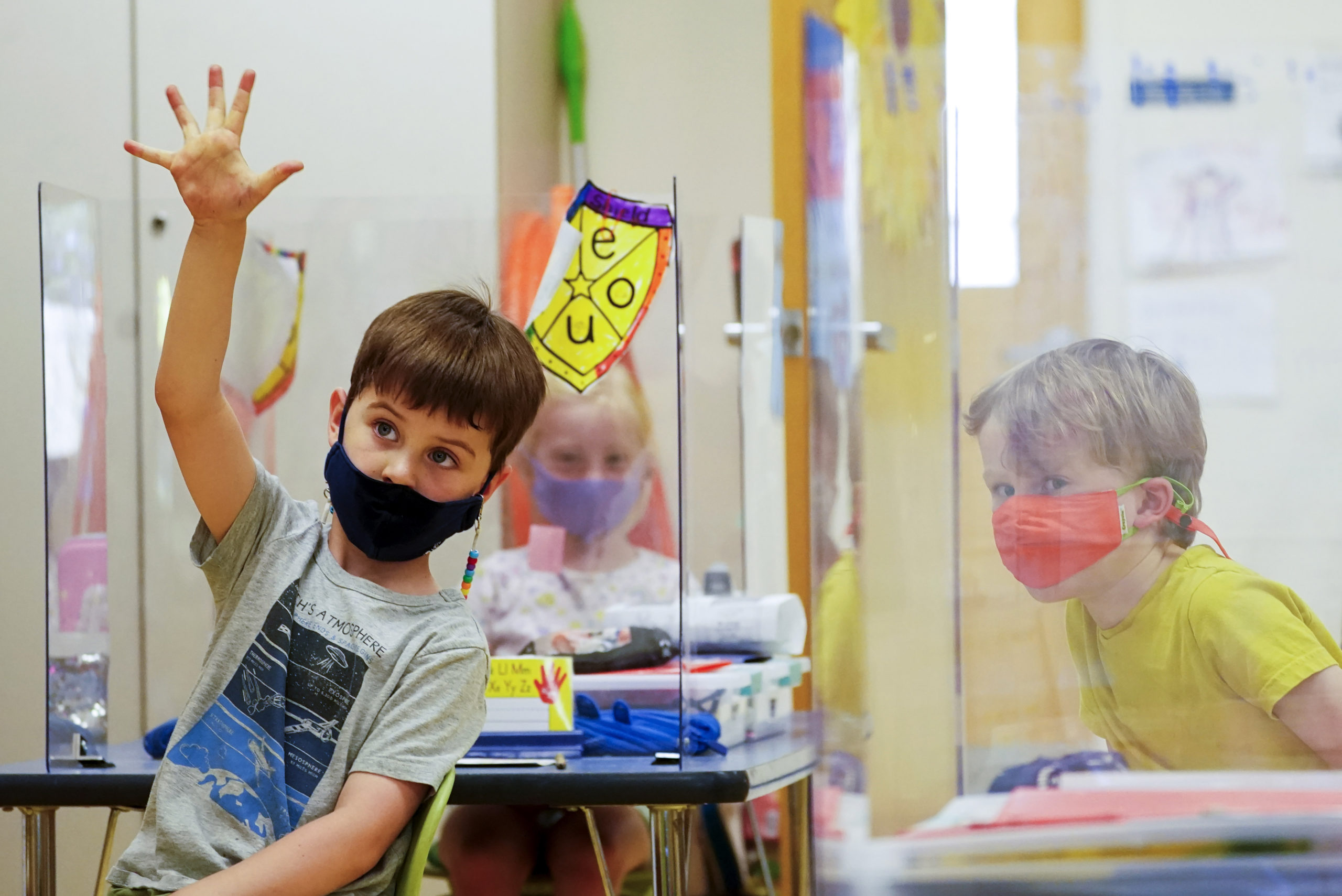
Mary Altaffer/AP
Kindergarten students wear masks and are separated by plexiglass during a math lesson at the Milton Elementary School, in Rye, N.Y.
Schools across the country may have lost track of 1 million to 3 million students during the pandemic, but some are finding that after-school and other community organizations, which often maintained connections with students and families, are valuable in bringing kids back.
Seven times as many students were chronically absent this past school year as in a normal school year, according to a recent report by FutureEd, an education think tank at Georgetown University.
The highest rates of absence are among kids living in poverty, English language learners, and students with disabilities, according to FutureEd.
The numbers square up with an extensive analysis last fall by Bellwether Education Partners, which estimated that about one-fourth of the 12 million students it considers marginalized became disengaged from school, said Hailly Korman, Bellwether senior associate partner.
“Many of these young people and their families are coming into contact with other public systems such as community-based organizations, faith-based organizations, youth organizations and public services,” Korman said. Those groups are very important in reaching students, she added.
Teresa Dothard-Campbell is the site coordinator of an after-school program at Glenview Middle School in East Moline, Illinois, that serves about 250 students a year.
When students weren’t logging on to remote classes this year, the school tried to contact them by phone. When that didn’t work, Dothard-Campbell expanded the effort.
“This was the first year that we had to step up and we had to do home visits,” she said in a recent Afterschool Alliance online presentation about summer learning.
Now she’s enlarging the summer enrichment program in an effort to re-engage kids after months of remote learning. She’s promoting the program more extensively than before using social media and old-fashioned fliers.
“We want our families to see information [about the summer program] at grocery stores, at their local churches and synagogues, and as they’re just out for a stroll,” she said.
Summer camp and home visits were promising practices to bring students back, according to educators, experts and students in a May 18 online discussion on re-engaging families convened by Chalkbeat Chicago.
In-person school events and high-frequency text messages to parents were also effective, but email blasts, robocalls, and truancy letters from the school were not, they said.
Kari Glenn, youth outreach coordinator and truancy officer in Kane County, Ill., told the panel she how she found a family of five children who had stopped going to school. After searching, she discovered they had moved several times and were living with relatives after a parent had lost a job.
The family’s connection with a community group and a food distribution site led to their return to school, she said. The community group encouraged return, but the family also needed food and it was important to address that barrier, she said.
Korman said families who reconnect with the school system often do so through a relationship with someone they trust.
“It might be a teacher, a bus driver, a social worker… or someone at church or someone at the intake desk at the health clinic,” she said.
Community organizations need guidance and resources around re-connecting kids, Korman said. Staff need to be able to tell families the right phone number to call and the right place to go. Families may be worried they’ll be in trouble, she said.
When data-sharing agreements exist between a school district and community partners, such as after-school providers, the district can alert the providers and ask them to find students, Korman said.
One citywide effort is being undertaken by Alignment Nashville, an organization that creates teams dedicated to addressing specific education needs in Nashville, Tenn.
It convened a school attendance team in early 2020 and worked with the organization’s existing data management team to find missing students in Metro Nashville Public Schools.
“I would love for a city to say: ‘Look, our expectation is that every single kid is back in school by the end of the year, and we’re going to incentivize that,’” Korman said.





























